
One of The Lord of the Rings‘ greatest strengths is the depth and creativity of its worldbuilding. Fans tend to focus on the fantasy races and magical creatures that J. R. R. Tolkien invented, but just as important to the ecology of Middle-earth were its plants, which are often overlooked. One fictional plant that has appeared in multiple adaptations of Tolkien’s work — including Peter Jackson’s The Lord of the Rings film trilogy and Prime Video’s The Lord of the Rings: The Rings of Power — is a type of small white flower known as simbelmynë. Tolkien first mentioned simbelmynë in the chapter “The King of the Golden Hall” from The Two Towers. As Gandalf, Aragorn, Legolas, and Gimli rode towards Edoras, they saw simbelmynë growing on the green hills of Rohan.
Tolkien wrote, “Upon their western sides the grass was white as with a drifted snow: small flowers sprang there like countless stars amid the turf.” This was not the only time that Tolkien compared simbelmynë to stars, implying that their petals formed shapes reminiscent of stars. According to The Lord of the Rings: A Reader’s Companion, Tolkien pictured simbelmynë as a variety of anemone flowers. Simbelmynë was the name that the Rohirrim gave it, meaning “evermind” in Old English. In the Elvish language of Sindarin, simbelmynë was instead known as uilos, meaning “everwhite,” or alfirin, meaning “immortal.” All of these names referred to the fact that simbelmynë bloomed year-round, but in the culture of Rohan, its name had an additional, deeper meaning.
Simbelmynë Marked the Graves of Dead Kings
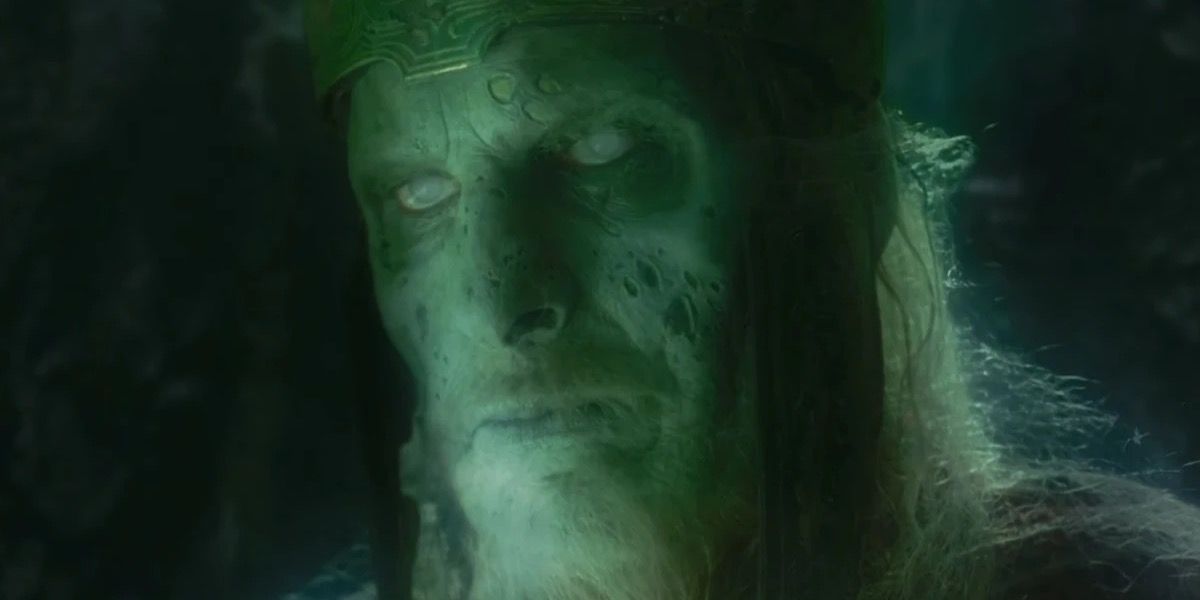
Simbelmynë grew all over Middle-earth. In Unfinished Tales of Númenor and Middle-earth, Tolkien noted that it was plentiful between the fourth and fifth gates of the hidden Elven city of Gondolin. But it was most common — and held the greatest significance — in the kingdom of Rohan. Simbelmynë grew particularly thick on graves, especially those of mighty heroes. “Evermind,” therefore, referred to keeping their memory alive. The flowers that Gandalf, Aragorn, Legolas, and Gimli initially saw were on the Barrowfield, an area just outside Edoras that contained the burial mounds of Rohan’s previous kings. This is not to be confused with the Barrow-downs, a region near Bree in which the hobbits encountered undead spirits. The burial mound with the most simbelmynë upon it was the one belonging to Helm Hammerhand, the ninth King of Rohan and the namesake of Helm’s Deep. According to Appendix A of The Lord of the Rings, there were so many flowers on his grave that it appeared to be covered in a perpetual blanket of snow.
There were separate sections of the Barrowfield for the different royal lines of Rohan.
Simbelmynë did not appear again in the novel, but Aragorn did mention it in the chapter “The Passing of the Grey Company” from The Return of the King. While traversing the Paths of the Dead, he discovered the skeleton of Baldor the Hapless, a Rohirrim prince who had died there long ago. He lamented that no simbelmynë could grow over him in such a place: “Hither shall the flowers of simbelmynë come never unto world’s end… Nine mounds and seven there are now green with grass, and through all the long years he has lain at the door that he could not unlock.” Simbelmynë’s tendency to grow on graves was not unique to Rohan; Unfinished Tales revealed that the flowers were also abundant on the hill that stood above Elendil’s tomb.
Simbelmynë Was Important in Adaptations of The Lord of the Rings
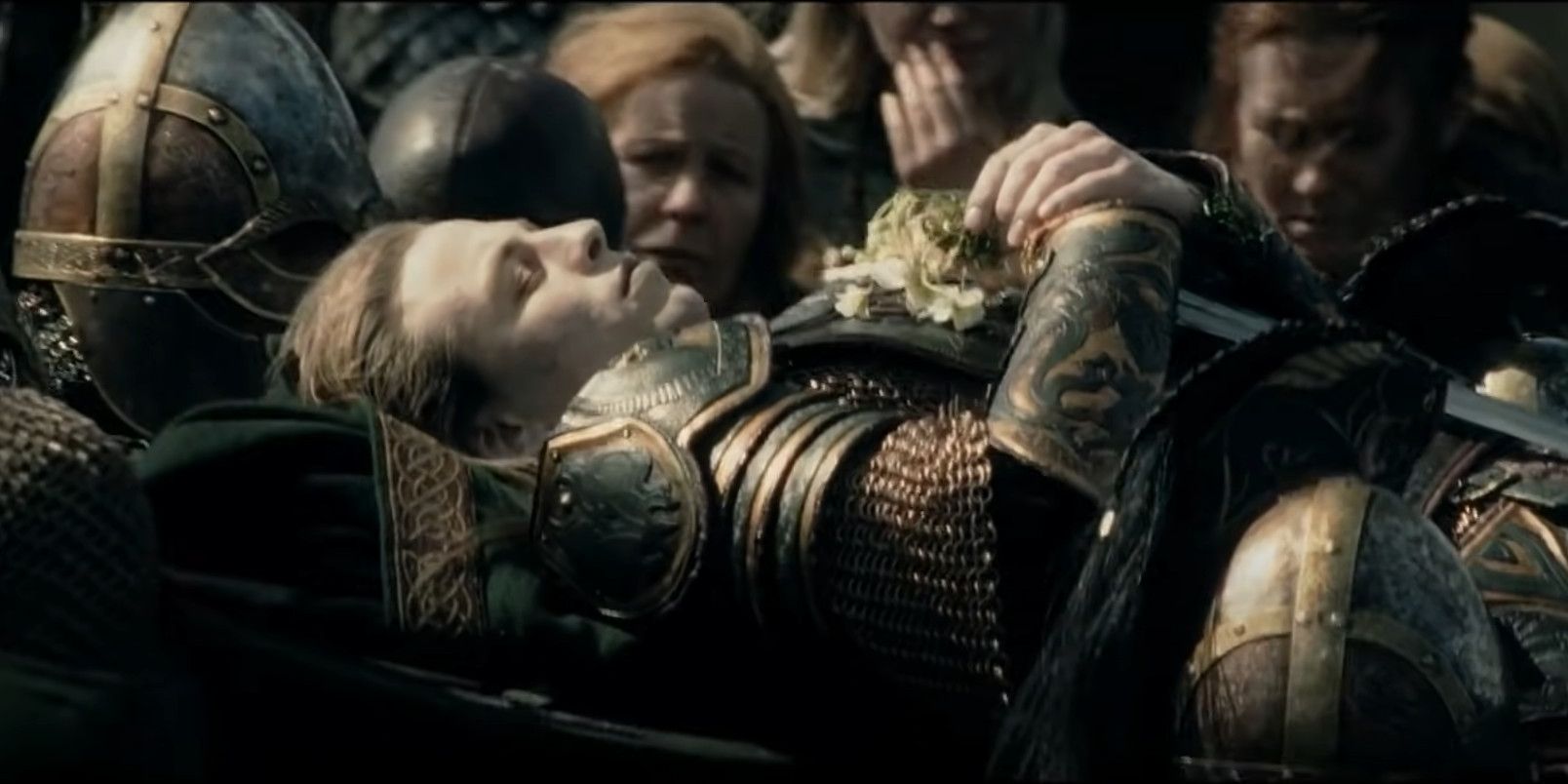
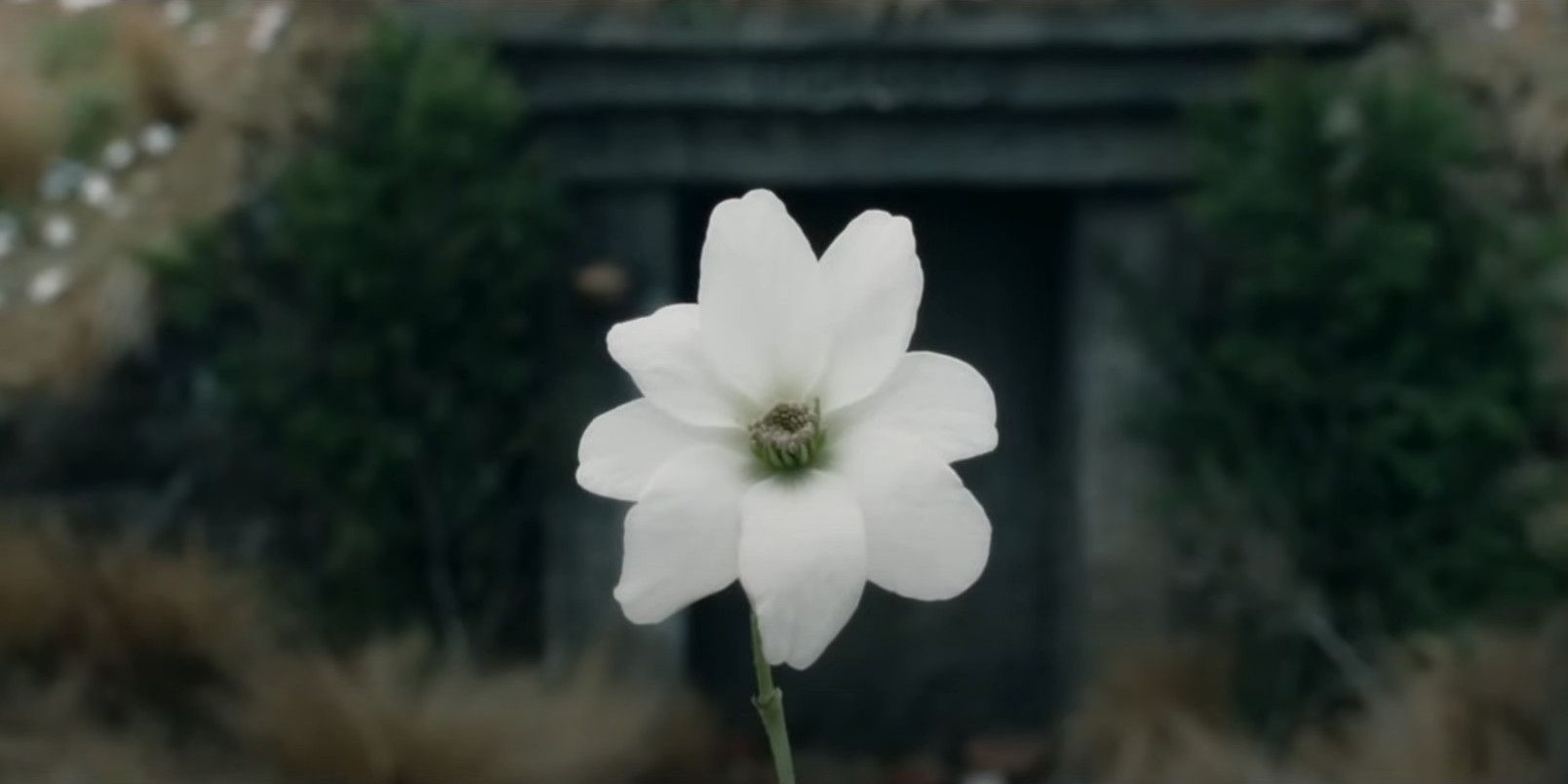
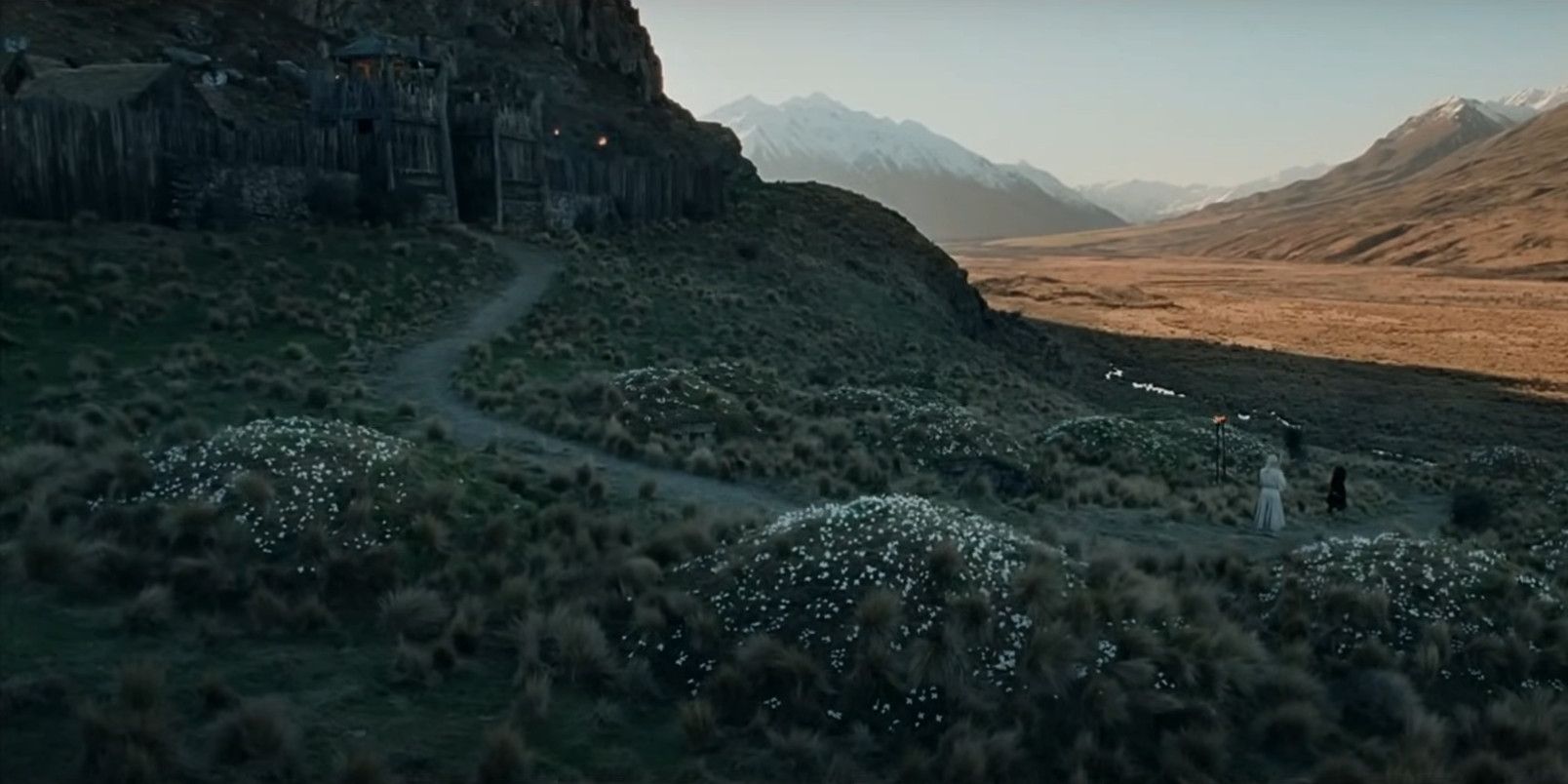
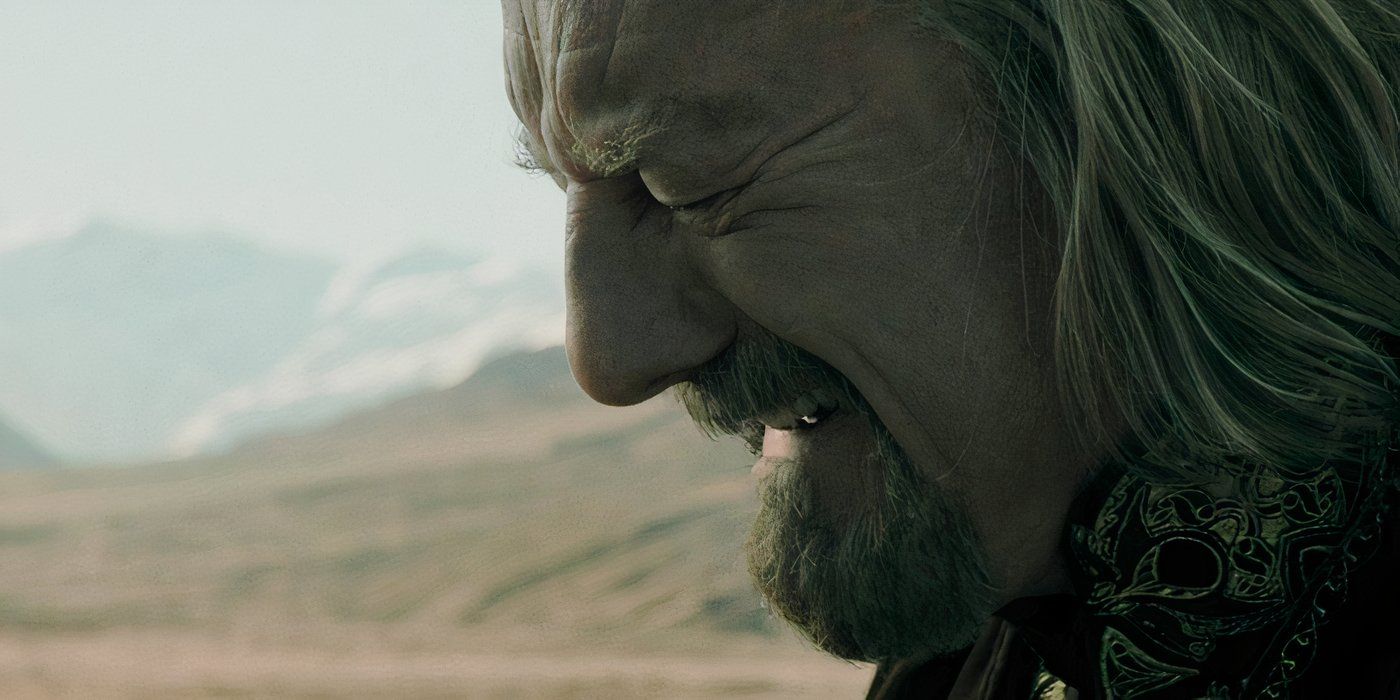
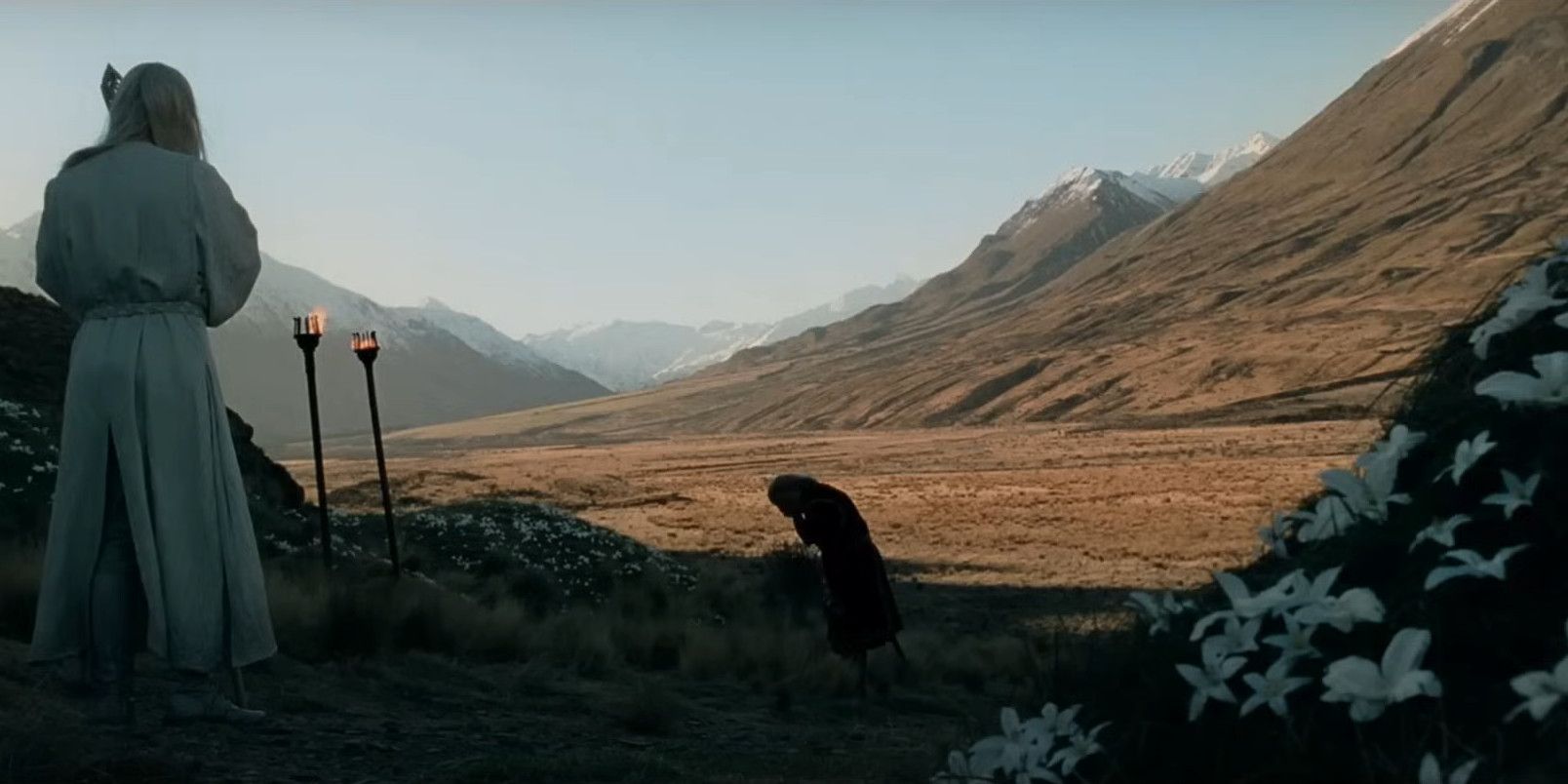





Jackson’s The Lord of the Rings: The Two Towers film added a scene in which Simbelmynë played a prominent role. After Gandalf freed Théoden from Saruman’s control, the Rohirrim held a funeral for Théoden’s son, Théodred, who had died from injuries he sustained at the Battle of the Fords of Isen. Théodred’s hands were wrapped around white flowers along with his sword, and many more flowers were growing on the burial mound in which they placed him. Before falling to his knees in despair, Théoden told Gandalf,
Simbelmynë. Ever has it grown on the tombs of my forebears. Now it shall cover the grave of my son. Alas that these evil days should be mine. The young perish and the old linger. That I should live to see the last days of my house… No parent should have to bury their child.”
In the film, the simbelmynë were artificial silk flowers based on anemones; they specifically resembled Anemonoides nemorosa, more commonly known as wood anemones.
Théodred’s funeral in the film was modeled after Māori traditions.
Bernard Hill, the actor who portrayed Théoden, came up with the last line of his quote to Gandalf.
The first season of The Rings of Power also included simbelmynë, but many viewers may have missed this, as the series referred to it as alfirin instead. In the episode “Udûn,” Arondir handed some alfirin seeds to Bronwyn and told her that it was “a tradition among Elves” to plant them before going into battle. She responded, “New life, in defiance of death.” Adar performed the same ritual before this battle, indicating that he held on to some semblance of his Elven heritage despite his drastic transformation. None of this had any basis in Tolkien’s writings, but it tied into the connection between simbelmynë and death. There was another possible nod to Simbelmynë in the second season. In the episode “Where the Stars are Strange,” Galadriel’s Ring of Power gives her a vision of Finrod’s grave, which is covered in white flowers. She planted some seeds in the dirt and said, “These lands shall bear you sweet blossoms once more.” There was no indication that these were simbelmynë, but the concept was certainly similar.
Beauty Could Come From Death in Middle-earth
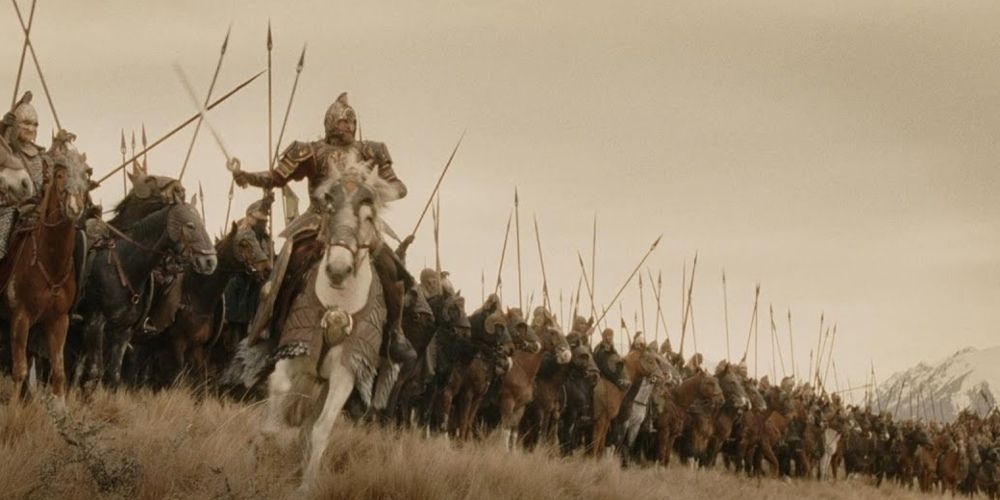
Simbelmynë was nature’s way of respecting Middle-earth’s heroes, marking their resting places with something beautiful. There were other examples of this throughout Tolkien’s legendarium. In the chapter “The Battle of the Pelennor Fields” from The Return of the King, Tolkien described the places where Théoden’s horse, Snowmane, and the Witch-king’s fell beast died: “Green and long grew the grass on Snowmane’s Howe, but ever black and bare was the ground where the beast was burned.” Similarly, in the First Age, there was a location known as the Hill of the Slain, which was a mass grave for Elves who died in the Battle of Unnumbered Tears. The surrounding area was a scorched desert, but grass grew over the Hill of the Slain. Flowers in Tolkien’s legendarium were not always good, however. In Minas Morgul flowed a river of poisonous water beside which grew white flowers that smelled of death.
Simbelmynë represented the cycle of life; death allowed new things to grow. This mirrored a quote from The Silmarillion about bad things eventually leading to good outcomes. In the section “Ainulindalë,” Eru Ilúvatar, the god of Tolkien’s legendarium, declared,
No theme may be played that hath not its uttermost source in me, nor can any alter the music in my despite. For he that attempteth this shall prove but mine instrument in the devising of things more wonderful, which he himself hath not imagined.
Tolkien might have drawn inspiration for simbelmynë from his experience in World War I. Poppies often grew on the graves of fallen soldiers, as they thrived in soil that had been disturbed by artillery. This led to poppies becoming a symbol for veterans. Though poppies are typically red, white poppies do grow in the wild. Though Tolkien wrote little about simbelmynë compared to many of his invented organisms, they left an impact on readers, including Jackson. In the director’s commentary for The Two Towers, he stated, “I kind of always thought [the concept of simbelmynë] was a pretty amazing thing, which is why I wanted to feature them here. There’s no real reason for it, but it’s kind of a neat idea.” Flowers that grow on graves are equal parts beautiful and sorrowful, which makes them fitting for emotional scenes such as Théodred’s funeral.





